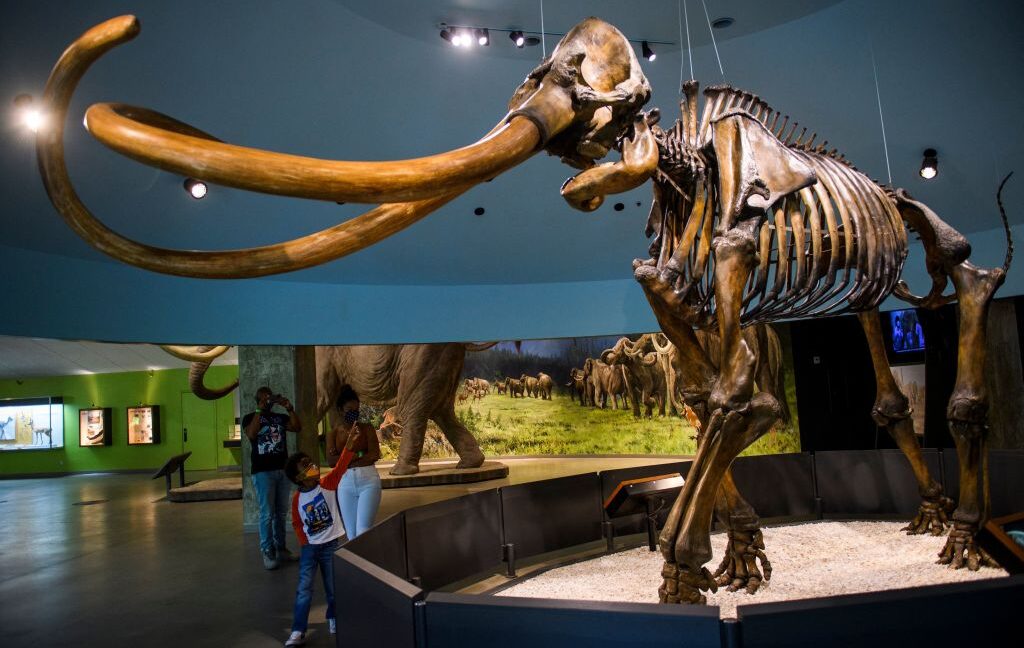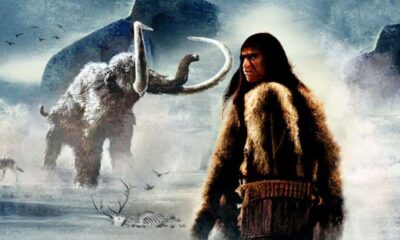Science
Researchers Uncover Unique Genetic Cluster in Central American Mammoths

A recent study has revealed distinct genetic characteristics of Central American mammoths, challenging previous perceptions of these ancient creatures. Researchers obtained genetic material from mammoth bones discovered in the Basin of Mexico, an area that includes Mexico City. Unlike their northern counterparts, these mammoths appear to form a unique genetic cluster, suggesting a complex evolutionary history.
Traditionally, mammoths have been classified into several species, including the well-known woolly mammoth and the Columbian mammoth. The woolly mammoth, adapted to Arctic climates, is believed to have branched off from the Eurasian steppe mammoth and was the first to migrate into North America. The Columbian mammoth has long puzzled scientists, as genetic data indicated it could be a hybrid of both steppe and woolly mammoths.
The researchers, part of a Mexican-European collaboration, focused on analyzing the mitochondrial DNA of mammoths from a warmer climate, where ancient DNA typically degrades more rapidly. They managed to extract genetic information from 83 samples, ultimately analyzing 61 new mitochondrial genomes. Of these, 28 genomes were deemed high enough quality for further analysis.
By constructing a family tree of these genomes, the team discovered that the Central American mammoths clustered together distinctly, with three separate groupings within this cluster. This positioning raised questions about the genetic relationships among these populations. Surprisingly, some Columbian mammoths from northern regions were found to be more closely related to woolly mammoths than to their Mexican relatives.
The findings suggest that mitochondrial DNA may be more closely tied to geographic location than to species classification. This contradicts traditional genetic expectations, where similar DNA should correlate with species rather than proximity. Researchers proposed two theories to explain this anomaly. One theory suggests that the Columbian mammoth represents a collection of hybrid populations resulting from multiple hybridization events. The second, which the researchers favor, posits that the North American woolly mammoths possessed diverse mitochondrial lineages before any hybridization occurred.
The implications of this research are significant, highlighting the need for further studies to clarify the genetic landscape of the Columbian mammoth. Additional exploration of mammoth remains in northern regions, where conditions may have better preserved DNA, could shed light on this complex evolutionary narrative.
The study, published in the journal Science in March 2025, emphasizes the importance of understanding the genetic diversity of ancient species. As researchers continue to piece together the story of these remarkable animals, the findings from the Basin of Mexico will undoubtedly contribute to a more nuanced understanding of mammoth evolution.
-

 Politics4 weeks ago
Politics4 weeks agoSecwepemc First Nation Seeks Aboriginal Title Over Kamloops Area
-

 World5 months ago
World5 months agoScientists Unearth Ancient Antarctic Ice to Unlock Climate Secrets
-

 Entertainment5 months ago
Entertainment5 months agoTrump and McCormick to Announce $70 Billion Energy Investments
-

 Science5 months ago
Science5 months agoFour Astronauts Return to Earth After International Space Station Mission
-

 Lifestyle5 months ago
Lifestyle5 months agoTransLink Launches Food Truck Program to Boost Revenue in Vancouver
-

 Technology3 months ago
Technology3 months agoApple Notes Enhances Functionality with Markdown Support in macOS 26
-

 Lifestyle3 months ago
Lifestyle3 months agoManitoba’s Burger Champion Shines Again Amid Dining Innovations
-

 Top Stories2 months ago
Top Stories2 months agoUrgent Update: Fatal Crash on Highway 99 Claims Life of Pitt Meadows Man
-

 Politics4 months ago
Politics4 months agoUkrainian Tennis Star Elina Svitolina Faces Death Threats Online
-

 Sports5 months ago
Sports5 months agoSearch Underway for Missing Hunter Amid Hokkaido Bear Emergency
-

 Politics5 months ago
Politics5 months agoCarney Engages First Nations Leaders at Development Law Summit
-

 Technology5 months ago
Technology5 months agoFrosthaven Launches Early Access on July 31, 2025




















